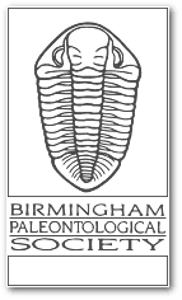Visitor
Paleo in the News
The AI model OpenFold3 takes a crucial step in making protein predictions
The open-source AI model improves transparency in predicting how proteins interact with other molecules, which could speed up drug discovery.
Categories: Fossils
Two tiny genetic shifts helped early humans walk upright
Scientists have linked bipedalism to changes in how the human pelvis developed millions of years ago.
Categories: Fossils
Hurricane Melissa spins into a monster storm as it bears down on Jamaica
The story of Atlantic hurricanes is treading a familiar — and frightening — path: Climate change is fueling huge, slow-moving, rain-drenching storms.
Categories: Fossils
Polar bears provide millions of kilograms of food for other Arctic species
A new study shows how much food polar bears leave behind — and how their decline threatens scavengers across the Arctic.
Categories: Fossils
DNA reveals Neandertals traveled thousands of kilometers into Asia
DNA and stone tool comparisons suggest Eastern European Neandertals trekked 3,000 kilometers to Siberia, where they left a genetic and cultural mark.
Categories: Fossils
These simple knife tricks stop onion tears instantly
With a high-speed camera and a tiny guillotine, scientists showed that chopping onions slowly and with sharper knives cuts down on tears.
Categories: Fossils
Australia’s tropical forests now emit CO₂, clouding the COP30 talks
These tropical forest CO₂ emissions may warn of similar shifts in other regions, a key topic for COP30 climate talks in Brazil.
Categories: Fossils
Ancient tides may have sparked humanity’s first urban civilization
New research shows that the rise of Sumer was deeply tied to the tidal and sedimentary dynamics of ancient Mesopotamia. Early communities harnessed predictable tides for irrigation, but when deltas cut off the Gulf’s tides, they faced crisis and reinvented their society. This interplay of environment and culture shaped Sumer’s myths, politics, and innovations, marking the dawn of civilization.
Categories: Fossils
Dinosaurs were thriving when the asteroid struck
Dinosaurs weren’t dying out before the asteroid hit—they were thriving in vibrant, diverse habitats across North America. Fossil evidence from New Mexico shows that distinct “bioprovinces” of dinosaurs existed until the very end. Their extinction was sudden, not gradual, and the recovery of life afterward mirrored climate-driven patterns. It’s a powerful reminder of life’s adaptability and fragility.
Categories: Fossils
Dinosaurs were thriving when the asteroid struck
Dinosaurs weren’t dying out before the asteroid hit—they were thriving in vibrant, diverse habitats across North America. Fossil evidence from New Mexico shows that distinct “bioprovinces” of dinosaurs existed until the very end. Their extinction was sudden, not gradual, and the recovery of life afterward mirrored climate-driven patterns. It’s a powerful reminder of life’s adaptability and fragility.
Categories: Fossils
Dinosaurs were thriving when the asteroid struck
Dinosaurs weren’t dying out before the asteroid hit—they were thriving in vibrant, diverse habitats across North America. Fossil evidence from New Mexico shows that distinct “bioprovinces” of dinosaurs existed until the very end. Their extinction was sudden, not gradual, and the recovery of life afterward mirrored climate-driven patterns. It’s a powerful reminder of life’s adaptability and fragility.
Categories: Fossils
Hippos once roamed frozen Germany with mammoths
New research shows that hippos lived in central Europe tens of thousands of years longer than previously thought. Ancient DNA and radiocarbon dating confirm they survived in Germany’s Upper Rhine Graben during a milder Ice Age phase. Closely related to modern African hippos, they shared the landscape with cold-adapted giants like mammoths. The finding rewrites Ice Age history and suggests regional climates were far more diverse.
Categories: Fossils
Hippos once roamed frozen Germany with mammoths
New research shows that hippos lived in central Europe tens of thousands of years longer than previously thought. Ancient DNA and radiocarbon dating confirm they survived in Germany’s Upper Rhine Graben during a milder Ice Age phase. Closely related to modern African hippos, they shared the landscape with cold-adapted giants like mammoths. The finding rewrites Ice Age history and suggests regional climates were far more diverse.
Categories: Fossils
A conference just tested AI agents’ ability to do science
AI promises to speed up scientific analysis and writing. However, AI agents struggled with accuracy and judgment.
Categories: Fossils
Napoleon’s retreating army may have been plagued by these microbes
DNA from Napoleonic soldiers’ teeth uncovered two fever-causing bacteria that may have worsened the army’s fatal retreat from Russia.
Categories: Fossils
Before T. rex, there was the “dragon prince”
Scientists have unveiled Khankhuuluu, a new Mongolian dinosaur species that predates and closely resembles early Tyrannosaurs. With its long snout, small horns, and lean build, it represents a transitional form between swift mid-sized predators and giant apex hunters like T. rex. The find also suggests that large Tyrannosaurs first evolved in North America following an ancient migration from Asia.
Categories: Fossils
Before T. rex, there was the “dragon prince”
Scientists have unveiled Khankhuuluu, a new Mongolian dinosaur species that predates and closely resembles early Tyrannosaurs. With its long snout, small horns, and lean build, it represents a transitional form between swift mid-sized predators and giant apex hunters like T. rex. The find also suggests that large Tyrannosaurs first evolved in North America following an ancient migration from Asia.
Categories: Fossils
Before T. rex, there was the “dragon prince”
Scientists have unveiled Khankhuuluu, a new Mongolian dinosaur species that predates and closely resembles early Tyrannosaurs. With its long snout, small horns, and lean build, it represents a transitional form between swift mid-sized predators and giant apex hunters like T. rex. The find also suggests that large Tyrannosaurs first evolved in North America following an ancient migration from Asia.
Categories: Fossils
Brain cancer can dissolve parts of the skull
Glioblastoma doesn't just affect the brain. It also erodes bones in the skull and changes the composition of immune cells in skull marrow.
Categories: Fossils
We may finally know why birds sing at dawn
Birds all over the world break into a dawn chorus every morning – now experiments in zebra finches suggest both a mechanistic and a functional explanation for this phenomenon
Categories: Fossils
